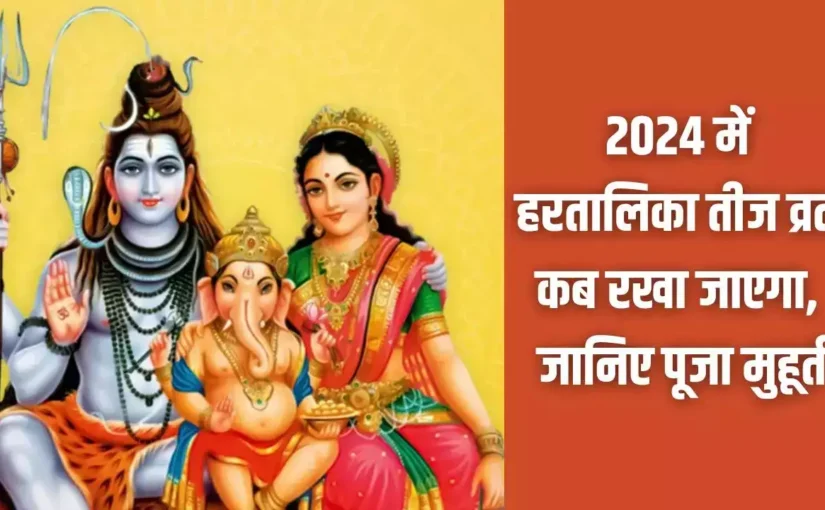Teej is a significant festival celebrated primarily by women in India, especially in states like Rajasthan, Uttar Pradesh, and Bihar. It generally falls during the monsoon season and is a time for women to come together, pray for the well-being of their husbands, and celebrate marital bliss. The festival is characterized by its vibrant festivities, rituals, and traditional clothing, symbolizing devotion, love, and the renewal of relationships.
Haritalika Teej will be celebrated on 6 September 2024, Friday. Haritalika Puja Muhurat will be from 06:02 am to 08:33 am. Tritiya Tithi will start from 12:21 PM on 5 September 2024 and will end at 03:01 PM on 6 September 2024.
The Meaning of Teej
The word “Teej” represents the day of the month which has a third phase of the moon, and the festival is associated with the worship of Goddess Parvati for her union with Lord Shiva. It celebrates womanhood, devotion, and the strength of the sacred bond of marriage. During this time, married women observe a fast and perform the puja rituals, praying for the health and longevity of their husbands. Unmarried women also participate with the hope of finding a good life partner.
The festival is not only a spiritual observance but also a cultural event filled with folk songs, dance, and gatherings. It reflects the joys and struggles of women, their resilience, and their devotion to family and tradition.
The Process of Teej Puja
Preparation for the Puja:
The preparation for Teej Puja begins days in advance. Women clean their homes and decorate them with colorful rangoli (designs made with colored powders) and flowers. They wear traditional attire, often adorned in beautiful green and red sarees, symbolizing fertility and prosperity. On the day of the festival, they gather the necessary Puja items, including a Puja thali (plate), fruits, sweets, and flowers.
Sankalp (Resolution):
The puja begins with Sankalp, where women take a vow silently or verbally, expressing their devotion and commitment to the rituals. This solemn promise serves to enhance their spiritual connection during the puja.
Setting Up the Puja Space:
A dedicated space is set up for the puja, where images or idols of Goddess Parvati and Lord Shiva are placed. The Puja thali is arranged with items like diyas (lamps), incense sticks, and sweets, reflecting the beauty of the occasion.
Offering Prayers:
Women begin the puja by lighting the diyas and incense sticks. They offer flowers and fruits to the deities while reciting prayers and mantras dedicated to Goddess Parvati. A popular chant is “व्यै महादेव्यै शिवायै सततं नमः। नमः प्रकृत्यै भद्रायै नियताः प्रणताः स्मताम्।” इस मंत्र के जाप से घर में सुख शांति बनी रहती है। इस मंत्र का जाप भगवान भोलेनाथ और माता पार्वती का आशीर्वाद पाने के लिए किया जाता है।” which invokes the goddess’s blessings.
Performing Aarti:
The Aarti (a ritual of worship with light) is conducted towards the end of the puja. Women sing devotional songs and rotate the thali with diyas in a circular motion while seeking blessings from the goddess.
Distribution of Prasad:
After the rituals, fruits and sweets, known as prasad, are shared among family members and friends. This symbolizes sharing the blessings received and spreads joy.
Celebrating with Festivities:
Once the puja concludes, the festivities begin. Women often gather to sing traditional Teej songs and perform folk dances, celebrating their devotion and the spirit of the festival. Traditional dishes are prepared, and sweets are enjoyed, adding to the joyous atmosphere.
Teej Puja is more than just a religious observance; it’s a celebration of love, devotion, and cultural heritage. It strengthens the bonds between families and communities, reminding everyone of the importance of faith, love, and the inherent power of women. From its rituals to its vibrant celebrations, Teej embodies the essence of devotion, hope, and the celebration of life itself. As women come together to pray for the well-being of their loved ones, they reinforce the idea that tradition and spirituality are essential elements in the journey of life.


